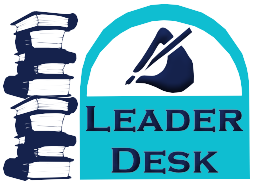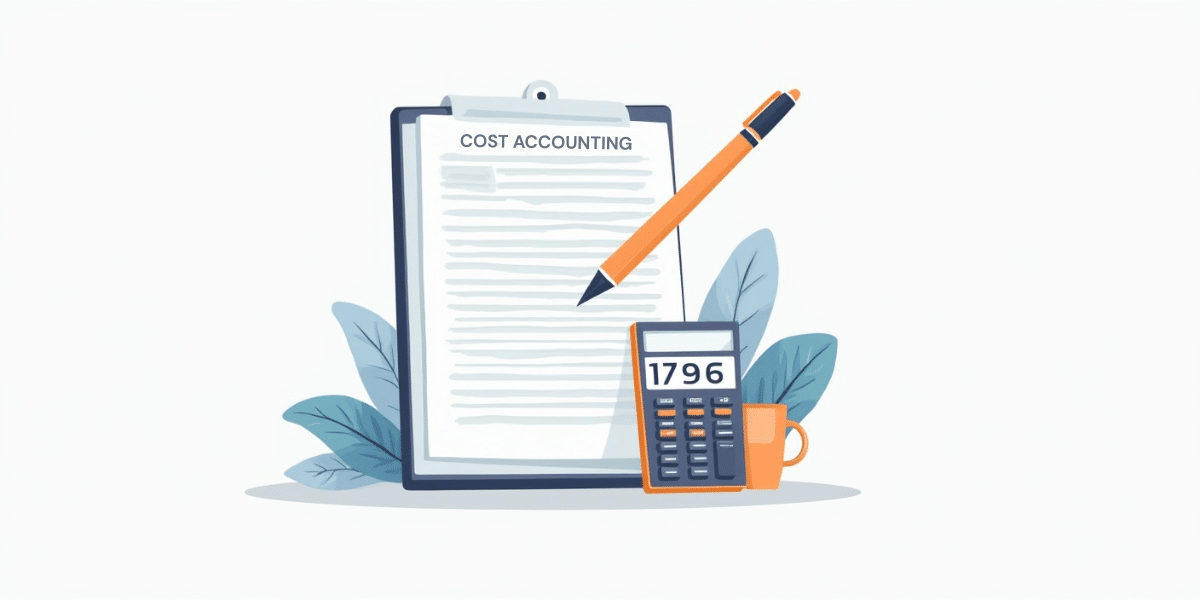Make A Trendy Statement with Fashion Designing Course
What is a Fashion Designing Course? A Fashion Designing Course is a popular specialization course in fashion and design. It comprises designing each and everything related to modern fashion. Like, Clothes, Handbags, Footwear, and Accessories. The program is pursued primarily by Arts students having a creative outlook on everything.

What is a Fashion Designing Course?
A Fashion Designing Course is a popular specialization course in fashion and design. It comprises designing each and everything related to modern fashion. Like, Clothes, Handbags, Footwear, and Accessories. The program is pursued primarily by Arts students having a creative outlook on everything. They use their critical thinking to design things that would blow out of proportion in the world of fashion. Moreover, they want to change and shape an era of fashionable items and create a new trendy one for the world.
A fashion design course is promising and rewarding in today’s world. A fashion designer has opportunities to grow in leaps and bounds in India or Globally. The last decade has seen enormous changes, creativity, and growth in the fashion industry and fashionable items. In addition, the fashion designing course comprises a broad range of components related to fashion. Like, Fabrics, patterns, colors, styles, trends, etc. All these components combine to give us a complete perspective of the Fashion design course. The skills and knowledge gained from the course help the students to create exquisite fashionable items and clothes that attract the modern population.
Fashion Designing Courses at UG and PG Level
Undergraduate Level Courses
- Bachelor of Design (B.Des) – It is a full-time four-year course in the field of design. It comprises various specializations, like Interior Designing, Fashion Designing, Textile Designing and Accessory Designing. In addition to this, the degree has evolved into other branches of study because of modern requirements, like Graphic, VFX, Game and Multimedia Designing.
- Bachelor of Fashion Technology (BFTech) – This fashion designing course is an appropriate combination of Technology and Creativity. It is a four-year course where students take a mandatory internship to understand the industry’s work atmosphere. The purpose of the program is to help the students with core concepts, designing, managing and marketing fashion products.
- BA (Hons) Fashion Design – The course helps students to create their own brands or to work for other firms. It bestows all the required knowledge to work in a design department of a product-based company. Also, it is a full-time course of three years in a regular mode of study.
Post-Graduate Level Courses
- Master of Design (MDes) – The program is an advanced course in the field of design to conquer the fashion and design domains with research and advanced conceptual skills. It is a two-year degree that offers to teach real-world techniques, industry-specific theories and design skills. Also, every single project throughout the course will allow the students to learn about the intricacies of the field of design. However, students can pursue this degree if they have a bachelor’s degree in a relevant stream. Like, Designing, Fine Arts, Fashion, Architecture, Engineering and Commerce.
- Master of Fashion Technology (MFTech) – It is a professional technical degree of two years. The students learn about manufacturing apparel, managing quality and production management. Also, it deals with the production part of the design. However, this program is not applicable to students possessing a bachelor’s degree in any stream. It only gets offered to students who have completed their B.F Tech program or B.E/B.Tech course.
- MSc Fashion Design & Technology – It is a two-year course preparing graduates to become skilful textile and apparel designers. Also, it comprises different aspects of design and technical machine work. The program includes applying art, creativity, aesthetics and design implementation to clothing and accessories. Moreover, it provides hands-on experience in manufacturing technology. The field is expanding and evolving continuously, where the use of Artificial Intelligence and Software Tools is required to design items.
Fashion Designing Course Syllabus
Bachelor of Design (B.Des) Syllabus
| Introduction to Pattern Making & Draping | History of Fashion | Model & Prototype Development |
| Introduction to Textiles | Current Trends and Forecasting | Fashion Illustration |
| Introduction to Fashion Sketching & Illustration | Apparel Development | Element of Colour & Design |
| Introduction to Fashion Design & Fashion Technology | Design Process | Research & Communication |
| Fashion Theory | Computer-Aided Design | Advanced Draping |
| Fashion Accessory | Fashion Model Drawing |
Bachelor of Fashion Technology (BFTech) Syllabus
| History of Costumes | Fundamentals of Computers | Fundamentals of Textile Fibers and Yarns | Fashion Communication |
| Fundamentals of Fashion Design | Principles and Elements of Design | Introducing Pattern Making and Stitching | Fashion Illustration |
| Customer Relations Management | Garment Construction | Surface Ornamentation | Pattern Making through Drafting and Flat Pattern Techniques |
| Import and Export | Quality Control | Financial and Management Accounting | Concept of e-Commerce |
| Pattern Making/ Cutting | Computer Aided Designing: Apparel Industry | Apparel Production Process | Entrepreneurship Development |
| Apparel and Fashion Merchandising | Fashion Merchandising | Fashion Marketing and Advertising | Production Management |
| Fashion Design and Illustration | Retail Merchandising and Management | Industrial Pattern Making and Sewing | Accessory Design |
| Environmental Studies | Pattern Grading | Fashion Merchandising | Graphic Design |
BA (Hons) Fashion Design Syllabus
| Computer-Aided Design | History of Costumes |
| Apparel Construction Methods | Introduction to Pattern Making and Garment Construction |
| Colour Mixing | Leather Designing |
| Elements of Textiles | Fashion Studies |
| Fashion Illustration and Design | Textile Science |
| Fabric Dyeing and Printing | Manufacturing Technology |
| Surface Development Techniques |
Master Of Design (MDes) Syllabus
| Introduction to Design | Ergonomics |
| Visual Design- Principles and Applications | Graphic Design |
| Design Methods | Form Studies |
Master of Fashion Technology (MFTech) Syllabus
| Introduction to Fibres | Fundamentals of Fashion Design | Introduction to Textile Finishing |
| Introduction to Colours and Theories | Managing Supply Chain | Regenerated Fibres |
| Intellectual Property Rights and Patents | Apparel Quality Characterisation | Advancement in Sewing Machinery |
| Garment Construction | Introduction to Factorial Design | Nanotechnology in Apparel |
| Apparel Technology | Functional Textile and Garments | Fabric Formation Technologies |
| Definition of Smart and Intelligent Textiles | Environmentally Sensitive Textiles | Smart Electronic Clothing |
MSc Fashion Design & Technology Syllabus
| History of World Fashion and Costume | Women’s Wear- International Fashion | Apparel Technology |
| Indian Wear | Elements of Fashion | Textile Technology |
| Men’s Wear | Surface Design Techniques | Fashion Merchandising and Marketing |
| Fashion Styling | Creative Pattern Making | History of Indian Costumes and Textiles |
Diploma Courses in Fashion Designing
Diploma in Fashion Designing
It is a diploma program that ranges from one to three years. A diploma fashion designing course imparts practical knowledge and skills to students. This diploma program does not pay heed to any theoretical aspects of teaching. The focus is on preparing students hands-on for the fashion field with immediate effect. So that they can use the practical concepts in their work as they go on studying through the program. The minimum eligibility for this program is to pass the 10+2 board exam with a minimum of 50% aggregate.
PG Diploma in Fashion Designing
It is a full-time PG diploma in fashion designer course of one to two years. This fashion designing course gets shaped accordingly to provide in-depth knowledge about the fashion industry. Also, the designing skills and advanced techniques are incorporated to create a new and trendy fashionable item for the larger population. Moreover, the course instils all the basic concepts about designing, consisting of colour, figures, sewing techniques and technical drawings.
Advanced Diploma In Fashion Design And Management
It prepares graduates to enter the Fashion world and related industries as innovative thinkers. Also, all the required skillsets like awareness, sustainability and responsiveness are taught for better results after the course. Hence, it helps them to work efficiently according to industry standards and requirements. The program delivers advanced creative, technical, design and business training. Finally, these fashion designing courses are a part of a blooming field worldwide. So growth opportunities are ample with broad career roles and aspirations.
Eligibility Criteria for a Fashion designing Course
The fashion designer qualifications are minimum and basic. A vital aspect is that candidates from any stream, Arts, Commerce or Science, can pursue this fashion designing course after class 12. Also, the creative mind of a student is the sole important characteristic required in this course. However, some other eligibility criteria for this course are:
- Students from any stream must pass their 10+2 board examination with a minimum of 50% aggregate from a recognised school board.
- A candidate can only pursue a PG course in fashion design if they have completed their bachelor’s program in the design field. As a result, only graduate-level students get accepted for any PG-level fashion designing programs in India.
- A candidate aiming for any reputed fashion designing college has to sit in the entrance exams held for this program. Like, NIFT, NID, CEED and UCEED are some of the vital entry-level exams.
- Some colleges, like the National Institute of Fashion Technology (NIFT), have their own set of eligibility criteria. As a result, students should check every criterion from their official website before applying to the college.
Fashion Designing Exams in India
Every top fashion colleges admit students based on their performance in the entrance exams. The test has different stages of the design aptitude test. Finally, a personal interview round to shortlist candidates. Some top entrance exams are the following:
- NIFT Entrance Exam – NIFT is the ultimate choice for each fashion design aspirant. So, clearing its entrance exam is a task and requires skills. The Headquarters of NIFT is in Delhi. Also, it has 15 branches all over India in different Cities. As a result, it has various undergraduate and graduate programs for the students offering diversified in-depth knowledge about the field.
- NID DAT (National Institute Of Design Aptitude Test) – This entrance exam has two phases, Prelims and Mains. The National Institute Of Design is one of the top fashion education colleges in the country. As a result, to pass the admission criteria, a candidate has to pass both stages of the NID DAT with excellent scores.
- UCEED (Undergraduate Common Entrance Exam For Design) – This exam is for Undergraduate programs only. About 24 colleges in India participate in this national-level test. As a matter of fact, IIT Bombay conducts this particular entrance exam for the candidates. Also, the number of students appearing in this test is significantly high.
- CEED (Common Entrance Examination For Design) – IIT Bombay organises the CEED exam. This national-level test is for admissions to the master’s program in design. As a result, numerous colleges in India accept these scores for admission to the PG programs.
- IIAD (Indian Institute of Art And Design) – IIAD is one of the pioneer colleges in the field of fashion design. Hence, it offers different types of UG and PG-level programs in design. This entrance exam is challenging and helps students to get admission fairly.
Skills Needed for Fashion Designing Course
The course demands a lot of different kinds of skillset from the candidates so that they excel in this field. The students aiming to become successful designers must justify the course through their hard work and skills. Hence, some of the vital skills required in this field are:
- Good Drawing and Sketching Skills
- Creativity
- Innovative Skills and Authentic Ideas
- Artistic Outlook
- Observation Skills and Eye For Details
- Persuasiveness
- Visual Imagination
- Good understanding of the market and Customer Lifestyle
- Sensitivity to Colours, Shades, and Tones
- Good communication skills
Top Jobs after a Fashion Designing Course
The job profiles after pursuing this course are in abundance. India is the second largest population in the world, so the demand for new fashion and clothing is enormous. As a result, there are numerous jobs on offer to cater for the need of such a large population. Hence, some of the jobs available after the course are:
Fashion Designer
A fashion designer tries to create new and trendy fashion for people of every gender and age. Hence, this job profile requires a lot of creativity and originality to draw and sketch something worthwhile. Also, aspirants can create their brand or join a firm to create and design clothes for them.
Fashion Marketer
A fashion Marketer has the job of publicising and raising awareness of a particular brand, label or store. As a result, they market these entities to increase sales and popularity. This job allows them to work for different Boutiques, Clothing Companies and Outlet Chains.
Quality Controller
The primary role of a Quality Controller is to look after the quality standards of each item. They check whether all the purchased items meet the quality standards and can be used to produce quality apparel or accessory for the customer. Also, they maintain and issue guidelines to check the quality of garments.
Fashion Coordinator
A fashion coordinator stays up-to-date with all the Industry trends by monitoring numerous fashion publications. They advise the companies on what to produce. They guide on style of the garment, fabrics, and pattern. Hence, they are responsible for coordinating and creating a unified production process.
Technical Designer
Technical designers look after the stitching techniques in the production of a garment. Also, they decide the sewing patterns, points of measurement, wash description, label placement and packaging instructions.
Fashion Concept Manager
This job demands research and ideas from aspirants on the advertising front of a new line of clothing. Also, they must think of unique themes for a clothing or accessory range of a company that would help in the design concept of the product.
Personal Stylist
It is a self-employed job where connections and reach matter. Personal stylists aim to develop and create a fashion wardrobe for their clients that shall promote their public image. Also, they advise on what to wear, things to avoid, the hairstyle, and make-up.
Fashion Show Organisers
The typical role of this job is to organize different kinds of fashion events throughout the country. One has to look after all the arrangements for a successful event where small and big designers participate. Also, good connections in the fashion industry are vital to excel in this role.
Footwear Designer
A footwear designer needs to possess an artistic mindset and excel in the drawing. These designers imagine, innovate and create fashion and trendy footwear viable for every type of clothing. Hence, a career in footwear design is on par with the fashion designer’s level.
Costume Designer
Costume Designers work to design the wardrobe, accessories, and footwear for the entertainment industry. Every movie and television program hires a costume designer for themselves. Hence, their role is to design every fashion apparel used in the theatre, movie or television program.
Working as a freelancer with Chegg
Fashion designing course is growing exponentially at a nice pace in India. Many young and new aspirants with great artistic outlooks and ideas are shaping themselves to become top fashion designers in the country. Also, students from different streams and facets of education are entering this field to test their luck. Money is worthwhile after achieving success, and it comes with fame. Also, if people want to work hard, be creative, and be interested in a side hustle to earn some decent money, they can check out Chegg. The Company hires Freelance Writers, Questionnaire experts, and Technical experts of every background. Chegg offers time flexibility and decent money. To gain corporate exposure and enhance knowledge, enroll in the hiring process. Therefore, all you have to do is sign up!
Frequently Asked Questions
Q.1 Which course is best for a fashion designer?
Ans. Various fashion designer subjects have great scope. The best course to pursue is a Bachelor of Design (B.Des). Also, other vital courses with great opportunities are B.Sc in Fashion Design and BA in Fashion Design.
Q.2 Is the fashion designing course easy?
Ans. The fashion designing course is not that easy nor too hard. It requires years of study and skills to excel in the syllabus fashion design course. If someone asks what a fashion design course is, then in simple terms, it can be defined as designing clothes and anything related to fashion and humans.
Q.3 Which course is best after the 12th for fashion designing?
Ans. The Bachelor of Design course is the best after finishing class 12th. Moreover, students should check the fashion designing course fees for each course and then select the suitable one. There are numerous options available after class 12.
Q.4 How many types of fashion designer courses are there?
Ans. There are five major types of fashion designing courses in India. All these vital fashion design studies offer great prospects for aspirants.
The post Make A Trendy Statement with Fashion Designing Course appeared first on Chegg India.



























